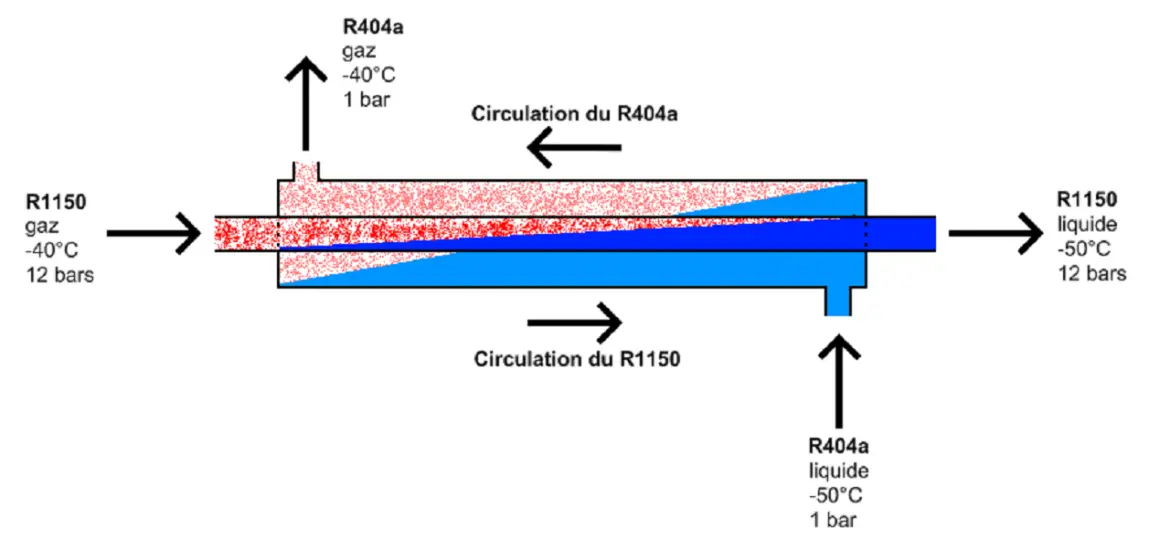Ever wondered how your home stays cool even on the hottest days? That’s where a subcooling heat exchanger comes in. It plays a crucial role in your air conditioning system by cooling the refrigerant, so it’s even more efficient at keeping your home comfortable. But how does it work? And why is it so important? Let’s dive in and find out.

Table of Contents
Design and Construction of Subcooling Heat Exchangers
Not all heat exchangers are created equal, especially when it comes to subcooling. There are different types of heat exchangers, each with its own pros and cons:
Shell-and-tube heat exchangers
These are the most common type, with tubes inside a larger shell. They’re versatile and can handle a wide range of temperatures and pressures.
Plate heat exchangers
Instead of tubes, these use a series of plates to transfer heat. They’re more compact and efficient, but can be harder to clean.
Coiled heat exchangers
These use coils or spiral tubes to transfer heat. They’re great for small spaces and are often found in residential systems.
When it comes to materials, heat exchangers can be made from metals like copper or aluminum, or even non-metals like plastics. But whatever the material, it’s essential to consider factors like corrosion and fouling to ensure a long-lasting, efficient heat exchanger.
Lastly, sizing and capacity are crucial for a heat exchanger to perform its best. Factors like heat transfer area, efficiency, and pressure drop all come into play when choosing the right one for your home.
Operational Principles of Subcooling Heat Exchangers
Heat exchangers work through three main mechanisms: conduction, convection, and radiation. The refrigerant in your AC system absorbs heat from your home and releases it outside through these processes. And it’s important to remember that temperature and pressure are closely related when it comes to subcooling.
Refrigerant selection is also key. You’ll want one that’s efficient, environmentally friendly, and safe for your home. There are plenty of options out there, so do your research and pick the best one for you.
Applications of Subcooling Heat Exchangers
While we’re focusing on residential cooling, subcooling heat exchangers have a wide range of applications, from industrial refrigeration to electric vehicle battery cooling. They’re versatile and can be found in various industries, keeping things cool wherever they’re needed.
Performance Enhancement Techniques for Subcooling Heat Exchangers
Want to get even more bang for your buck? There are plenty of ways to boost the performance of your subcooling heat exchanger. Liquid-side enhancements like turbulators, twisted-tape inserts, or surface coatings can increase efficiency. And on the vapor-side, finned surfaces, microchannel heat exchangers, or compact heat exchangers can make a big difference. Experiment with these options and find what works best for your system.
Maintenance and Troubleshooting of Subcooling Heat Exchangers
Regular maintenance is essential for a well-functioning subcooling heat exchanger. This includes periodic inspections, cleaning, leak detection, and refrigerant management. Don’t let issues like fouling, corrosion, or inadequate subcooling sneak up on you – stay on top of maintenance and keep your system in tip-top shape.
Future Trends in Subcooling Heat Exchangers
As technology advances, so do subcooling heat exchangers. We can look forward to innovations like nanomaterials, polymer-based heat exchangers, and shape memory alloys, as well as energy-efficient and environmentally friendly designs. Waste heat recovery, natural refrigerants, and integration with renewable energy systems are just a few examples of what’s on the horizon.
Conclusion
So, there you have it – a comprehensive look at the importance and applications of subcooling heat exchangers. Whether you’re a homeowner looking to optimize your cooling system or just curious about the technology, understanding the role of subcooling heat exchangers is essential. Keep an eye on the latest trends and innovations, and you’ll be well-equipped to make the best choices for your home and the environment.